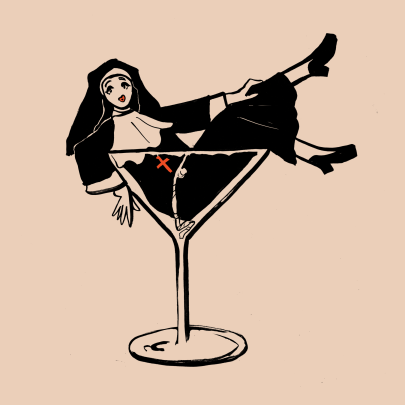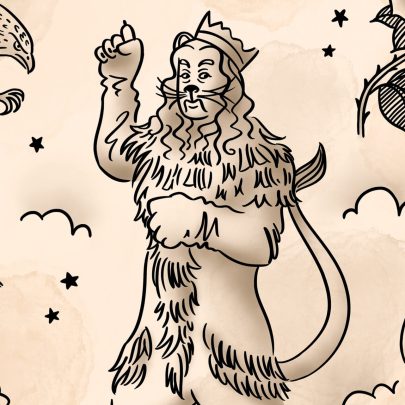Mar 1, 2016 Theatre
Forget Macbeth: here’s a wild brew of Scottish history designed to get you on the edge of your seat and keep you there.
Rona Munro is surplus to requirements. It’s her phrase, not mine. On the phone from Edinburgh, she’s referring to the fact that although she’s the playwright, she won’t be touring with the company when they bring The James Plays to town in March. Still, in the 21st century, it’s not much of a punishment, is it, to be left at home? Back in the 15th century, the period about which she’s written, being surplus to requirements would have meant something very much more grisly.
Yes, there will be blood. Theatrically presented — this is live theatre, not Game of Thrones, so it’s not a “gore-fest”, as Munro puts it. But it is violent.
And enormously political, too. The stories of James I, II and III of Scotland, the founding of the Stewart line, are stories of a ruling class in transition: the brute force of the castle acceding to the rituals and conventions of the court. Nobles, the best of them and the worst, feeling their way to a more sophisticated kind of power.
Stewart, not Stuart? True Scots, suggests Munro, will be pleased to see it. Stuart is the French spelling, adopted at the insistence of Mary, Queen of Scots, but Stewart is the original.
We know so little of medieval Scottish history. Braveheart William Wallace fought for independence 120 years before the story of these plays begins; and 300 years before him, there was Macbeth, who really did rule Scotland, although it wasn’t quite the way Shakespeare said. Then it’s Mary, Queen of Scots and her successors, who were James VI and VII of Scotland and became James I and II of England. That was in the Renaissance, over 100 years after the period of these plays. The Battle of Culloden, the last great battle between the Scots and the English, was later again, in 1745.
The plays begin in 1421 and end in 1488, and it’s not just us who know so little about Scotland in that time. When they were first presented, at the Edinburgh Festival in 2014, most audience members were coming to the stories for the first time, too. Munro herself says she really had to dig. “I was an indifferent student of medieval history at university,” she says, “but even if I’d been really keen, there’s not a lot that was known.”
She says the response of academics to her plays has been “very supportive, which is nice”, but adds that she knows her idea of what happened won’t, and shouldn’t, be the only one. “It’s fertile ground to have a lot of versions,” she says. “I really hope that happens.”
At the start of the first play, James I is nearing the end of 18 years as a prisoner in England. His jailer is Henry V, who, in Munro’s hands, is a vicious rogue and not at all the noble liege you may know from Laurence Olivier or Kenneth Branagh.
The plays are “Scottish history through the prism of a 21st-century woman — an investigation of what it means to be Scottish”.
Once home in Scotland, he must establish a throne and manage the overwhelming English, and the hardest part of that is to manage the Scottish nobles, especially the members of his own Stewart clan. There’s little decorum, no fealty: “aristocratic anarchy”, as one critic put it, is their preferred state of being. For James, it doesn’t go that well.
The second and third plays deal with his legacy, so to get the best sense of it all, if you’re thinking of trying just one of the plays, make it the first.
The Edinburgh Festival in 2014 coincided almost exactly with the referendum on Scottish independence, which was fortuitous. Munro had the writing of these plays well underway before the date of the vote was announced, but she was delighted to be able to make such a “supercharged contribution” to the debate.
But they’re not “referendum plays” as such. And, the writer says, “fundamentally, they’re not really about Scotland’s relationship with England”. Rather, she calls them “Scottish history through the prism of a 21st-century woman — an investigation of what it means to be Scottish.”
And what it meant to be a medieval queen, too. “People have this image of them sitting on window seats doing tapestry or something. It’s not like that in my plays.” Her Queen Joan, wife of James I, is a naive young woman with a terrible future to confront; her Queen Margaret, the Danish wife of James III, emerges as one of the most powerful people in the entire saga.
That part was originally played to great acclaim by Sofie Gråbøl, known here to many as Sarah Lund in The Killing. Gråbøl isn’t in the revival production — her place has been taken by Malin Crépin, who has also been getting strong reviews.
“You’ve got fuck all except attitude,” Margaret tells her still-plotting, still-warring relatives. In the modern political landscape, it’s a resonant accusation, and that’s no accident. Munro’s concern, right through the trilogy, is to explore the way political power is wielded and seized and railed against.
She uses history to interrogate the present. Loudness — command of the discourse — is not the surest guide to power, as Donald Trump may discover, and even what seems like brute force can be misleading. “It’s so similar,” says Munro, “although these days if you fall foul of the people in power, you don’t get your throat cut.”
No Gråbøl; what else is new? “More than half the original cast [there are around 20] have remained, but some of them are now playing different roles. I think that’s a real tribute to the strength of the ensemble.”
She’s done some reworking, too. James II received a lukewarm reception in 2014, compared to the adulation showered on the work overall. “I’ve substantially rewritten the second play. It used to have puppets.” The notices have been much better.
So, is it a trial, to sit through all three plays: 11 hours, including meal breaks? Not according to the British critics, most of whom have urged people to see all three together if they can. Besides, says Munro, there are quite a lot of laughs. “You have to write with humour,” she says, “especially when you’re writing history. Humour helps us to deal with terrible things. And it gets you settled in and leaning forward.”
The James Plays, ASB Theatre, March 5-12.





